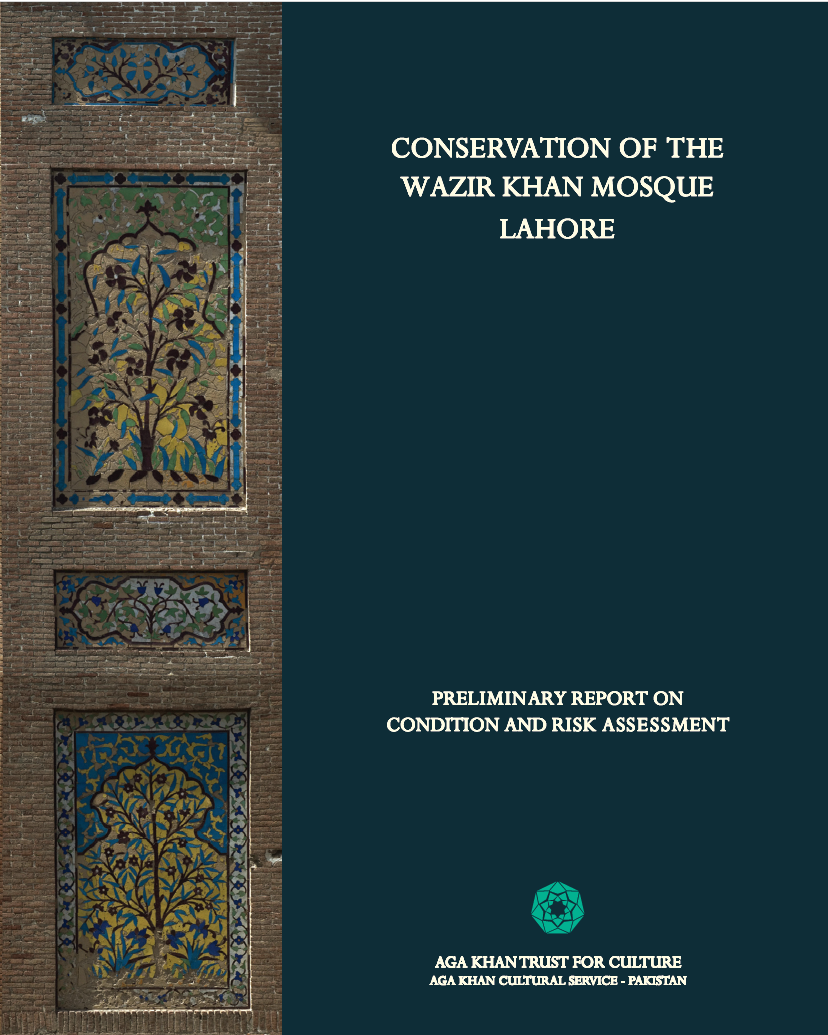
The spectacular monumental ensemble of the Wazir Khan Mosque in the Walled City of Lahore was built in 1634 during the reign of the Mughal emperor Shah Jahan. Its endowment then comprised the congregational mosque, an elaborate forecourt, a serai, a hammam, a bazaar, and a special bazaar for calligraphers and bookbinders. The mosque, the calligraphers’ bazaar, and the hammam still stand, while the other elements have disappeared—victims to Lahore’s turbulent history over nearly four centuries since the original dedication. What remains is increasingly in need of care and attention. Over a two year period starting in 2009, the Historic Cities Programme of the Aga Khan Trust for Culture, through the Aga Khan Cultural Service – Pakistan, conducted a baseline documentation of the monument and its surrounding areas. This volume contains the result of this work and presents an assessment of the organisational, technical and financial requirements for the conservation of the mosque as well as the revitalisation and enhancement of its surrounding context. The Trust has been actively engaged with the Punjab Government in the conservation of the urban fabric of the Walled City of Lahore and has, since 2007, collaborated in urban rehabilitation and infrastructure improvement efforts in the neighbourhood of the monument.
I agree to the terms outlined below:
You agree to upload and assign Mosqpedia Database the rights to use the content worldwide and in perpetuity across all current and future media platforms. Mosqpedia Database may edit, copy, adapt and translate your contribution.
The content will be distributed under the Creative Commons Attribution-Deed – Attribution-NonCommercial-NoDerivatives 4.0 International – Creative Commons
All data will be stored in line with data protection regulations.